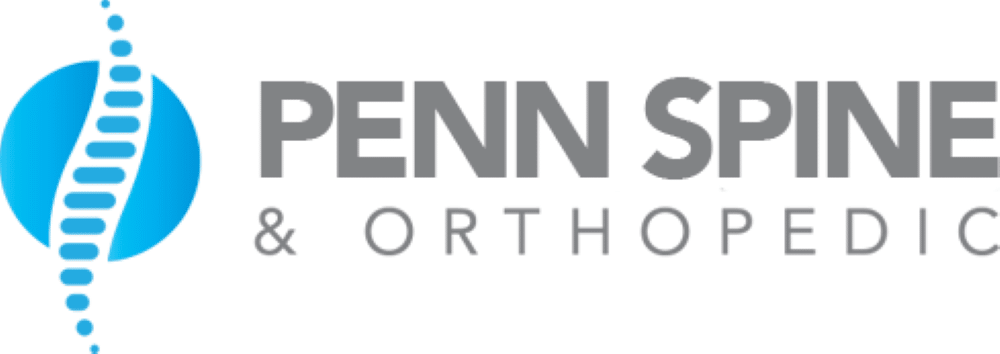Laser spine surgery is an effective, less invasive alternative to traditional open-back procedures. This surgical method employs a concentrated beam of light for precise incisions, minimizing damage to surrounding tissues and promoting faster recovery. Outcomes largely depend on the patient’s condition severity and overall health. Potential risks, such as infection and nerve damage, are mitigated through proper planning and surgical accuracy. However, costs and insurance coverage vary and should be considered. Laser spine surgery can greatly improve quality of life for suitable candidates. For a thorough understanding of this procedure, its benefits, risks, and if it’s right for you, please proceed.
Understanding Laser Spine Surgery
To fully understand the complexities of laser spine surgery, one must explore its foundational concepts, investigating its procedures, benefits, and potential risks. One of the essential factors that weigh heavily in the decision-making process is the cost implications of the surgery. Laser spine surgery, being a less invasive procedure compared to traditional open-back surgery, is often lauded for its reduced recovery time and decreased post-operative discomfort. However, these advantages may come at a higher financial cost.
The cost of laser spine surgery varies greatly depending on the specific procedure, geographic location, and the patient’s overall health condition. These factors contribute to a broad range of costs that may range from $30,000 to $90,000. Furthermore, another significant factor is insurance coverage. The degree of coverage for laser spine surgery is not universal and depends on the individual insurance company’s policies and the specific details of the patient’s insurance plan. Some plans may cover a portion of the cost, while others may not cover the procedure at all. As a result, it’s essential for patients to thoroughly investigate their insurance coverage and potential out-of-pocket expenses before deciding on laser spine surgery.
The Science Behind the Procedure
Delving into the science behind laser spine surgery, it becomes clear that this advanced medical procedure involves the use of a concentrated beam of light to make precise incisions and remove or shrink problematic tissue. This beam, born of sophisticated laser technology, is capable of performing intricate operations with minimal damage to surrounding areas.
To fully understand this procedure, one must appreciate the complexity of spinal anatomy. The spine, a delicately interconnected system of bones, nerves, and soft tissues, presents unique challenges for any surgical intervention. A slight miscalculation could lead to significant complications. This is where laser technology truly shines; its precision and controllability offer a solution to the inherent risks of traditional spine surgery.
In essence, the laser works by delivering a high-intensity light beam that vaporizes the problematic tissue at the cellular level, leaving healthy tissue untouched. This action is both precise and targeted, minimizing the risk of collateral damage. Additionally, the heat generated by the laser can seal nerve endings and blood vessels, reducing postoperative pain and bleeding. In conclusion, the marriage of an in-depth understanding of spinal anatomy and the application of laser technology creates a precise, effective surgical procedure.
Benefits of Laser Spine Surgery
Building on the technical precision of laser spine surgery, it is important to examine the numerous benefits this advanced procedure offers to patients. One of the primary advantages is that it is less invasive than traditional surgical methods, leading to shorter hospital stays and faster recovery times. This directly impacts surgery costs, as a briefer duration in the hospital can markedly reduce the overall expense associated with the procedure.
Moreover, the precision of laser surgery diminishes the risk of collateral damage to surrounding tissues, which can minimize postoperative pain and accelerate the healing process. This results in fewer complications and, subsequently, less need for additional treatments or interventions. This not only improves the patient’s quality of life but also contributes to cost-effectiveness.
Insurance coverage for laser spine surgery varies, but as the benefits and effectiveness become increasingly recognized, more insurance companies are providing coverage for this procedure. This can make this advanced treatment more accessible to patients who might not otherwise be able to afford it.
Potential Risks and Complications
Despite the numerous advantages of laser spine surgery, it is imperative to contemplate potential risks and complications that may arise during or after the procedure. One potential risk is infection, which can lead to serious health complications if not promptly and appropriately treated. Other risks include nerve damage, which could result in numbness or weakness, and bleeding or blood clots, which can pose significant threats to overall health.
The implementation of risk mitigation strategies is vital to reduce these potential complications. Such strategies involve rigorous pre-operative planning, precise surgical techniques, and careful patient monitoring post-surgery. For instance, using advanced imaging technology can help surgeons accurately identify the surgical site, thereby minimizing the risk of nerve damage.
Complication management is another critical aspect of laser spine surgery. This involves the prompt identification and treatment of post-surgical complications. For instance, if a patient develops an infection, immediate administration of appropriate antibiotics is essential. Additionally, patients are often advised to maintain a healthy lifestyle post-surgery, including regular exercise and a balanced diet, to promote healing and prevent complications.

Candidates for Laser Spine Surgery
While understanding the potential risks and complications associated with laser spine surgery is important, it is equally significant to contemplate who makes a suitable candidate for this sophisticated procedure.
Candidates for laser spine surgery generally fall into two categories: those with chronic spine conditions unresponsive to conservative treatments, and individuals suffering from acute traumatic injuries. The former category typically includes conditions like herniated discs, spinal stenosis, and degenerative disc disease.
Now, let’s consider surgery costs and insurance coverage. Laser spine surgery is often more costly than traditional methods due to its advanced technology and specialized equipment. Insurance coverage varies widely, with some providers covering a portion of the cost, while others may not cover it at all. Hence, it’s imperative for potential candidates to thoroughly understand their insurance policy and the associated out-of-pocket costs.
The Surgical Process Explained
To grasp the effectiveness of laser spine surgery, it is crucial to understand the surgical process thoroughly. This includes breaking down the procedure itself, examining the recovery timeline, and identifying potential risks and complications. Therefore, our discussion will now move to these crucial aspects, offering a detailed analysis of each.
Understanding Laser Spine Surgery
How exactly does the process of laser spine surgery unfold, you may wonder? The procedure, rooted in our understanding of spine anatomy basics and the evolution of laser technology, is fairly straightforward but highly precise.
- To begin, a small incision is made to access the spine.
- Next, a laser is used to remove or shrink the problematic area causing pain, without damaging the surrounding healthy tissue.
- Finally, the incision is closed, often without the need for stitches due to the minimal invasive nature of the surgery.
This process is a proof of the advancements in our understanding of the human spine and the evolution of laser technology, making surgeries safer and recovery times shorter. Note, this is a simplified explanation and the specifics may vary with each patient.
Procedure and Recovery Time
Delving deeper into the surgical process, the procedure of laser spine surgery, although minimally invasive, demands meticulous precision from the surgeon and includes a recovery period that largely depends on the patient’s overall health and the specific area of the spine treated. The surgeon utilizes a laser to remove the offending tissue, causing minimal disruption to surrounding areas. Postoperatively, patients typically experience a quicker recovery time compared to open surgery, often returning to normal activities within weeks. However, the cost of the procedure can be steep, and insurance coverage varies widely, necessitating a thorough cost analysis. Ultimately, the decision to undergo laser spine surgery should be based on a thorough evaluation of the patient’s condition, potential benefits, recovery time, and financial implications.
Potential Risks and Complications
Despite the appealing benefits of laser spine surgery, it is essential to acknowledge that, like any surgical procedure, it carries its own set of potential risks and complications that need to be carefully considered.
The primary concerns often revolve around:
- Infection: Despite sterile conditions, there’s a chance of infection, demanding immediate complication management.
- Bleeding: Uncontrolled bleeding can occur, requiring risk mitigation strategies.
- Nerve Damage: There’s the potential for temporary or permanent nerve damage.
It is also important to note that not all patients are suitable candidates for this procedure. Factors such as overall health, the specific condition of the spine, and the presence of any underlying medical conditions can greatly influence the potential for these risks and complications. A thorough pre-surgical assessment is critical.
Recovery and Rehabilitation
Post-operative recovery and rehabilitation play a crucial role in determining the overall success of laser spine surgery. The process of healing and regaining spinal functionality is multifaceted, often necessitating a holistic approach that includes post-surgery nutrition and a tailored exercise regimen.
Post-surgery nutrition is integral to the recovery process. It provides the necessary nutrients for wound healing and energy restoration. A well-rounded diet rich in protein, vitamins, and minerals such as Vitamin C, Zinc, and Iron can facilitate timely recovery and enhance the body’s resilience against potential infection.
A well-planned exercise regimen is equally important, aiming to restore strength, flexibility, and movement range. Initially, the patient may engage in light exercises like walking, gradually progressing to more specific exercises under the guidance of a physiotherapist. Such a regimen not only improves physical agility but also aids in pain management.
Patients should also be aware that recovery times can vary significantly depending on individual health status, the extent of the procedure, and adherence to post-operative care instructions. Regular follow-ups with the surgeon are essential to monitor progress and address any concerns promptly. By combining proactive nutrition, a structured exercise regimen, and diligent medical supervision, patients can optimize their post-operative recovery and rehabilitation.
Laser Spine Surgery Success Rates
To accurately evaluate the efficacy of laser spine surgery, it is imperative to take into account success rates and recovery statistics. This includes measurable measures such as patient-reported outcomes, complication rates, and the percentage of patients who returned to work post-procedure. A thorough analysis of these factors will provide a holistic understanding of the success rate of laser spine surgery.
Analyzing Success Statistics
In examining the efficacy of laser spine surgery, it is vital to explore the available statistical data on success rates. A comprehensive analysis reveals that success rates can be influenced by various factors including surgery costs and insurance coverage.
- Surgery costs are a significant determinant of success rates. High costs may deter patients from opting for the procedure, potentially skewing success statistics.
- Insurance coverage also plays an essential role. With adequate coverage, more patients are likely to undergo the procedure, thereby increasing the pool of data for measuring success rates.
- The severity of the condition being treated also impacts the success rate. Certain conditions respond better to laser spine surgery than others.
Understanding these factors is critical to accurately interpreting success statistics of laser spine surgery.
Patient Recovery Rate
Delving into the domain of patient recovery rates provides invaluable insight into the effectiveness of laser spine surgery, illustrating the proportion of patients who experience significant improvement post-surgery. Studies have shown that a majority of patients report diminished pain and increased functionality post-procedure. Insurance coverage plays a significant role in patient access to this surgical option. It’s worth noting that while recovery rates are high, the success of the surgery is also contingent on thorough pain management strategies implemented post-operation. The success of laser spine surgery is multifaceted, pivoting not only on the surgical procedure itself but also on factors like insurance coverage and pain management, which collectively contribute to the overall patient recovery rate.
Personal Experiences and Testimonials
Numerous patients who have undergone laser spine surgery have reported diverse experiences, offering a wealth of personal testimonials that provide insight into the efficacy and impact of this medical procedure. These patient journeys, filled with individual triumphs and challenges, provide a unique perspective on the surgical outcomes.
Patients’ experiences vary widely, but certain themes emerge. Among them:
- A significant number of patients report experiencing immediate relief from chronic pain post-surgery, signifying a high success rate regarding pain management.
- Others emphasize the minimal invasiveness of the procedure, noting shorter recovery times and less post-operative discomfort compared to traditional surgery.
- Despite the largely positive feedback, some patients report negligible improvements post-surgery, or even a recurrence of pain.
These testimonials, while subject to individual variations, offer a glimpse into the real-world implications of laser spine surgery. They underscore the importance of individualized treatment plans and careful patient selection to optimize surgical outcomes. It is worth noting, however, that while these personal experiences can provide valuable insights, they should not replace thorough, evidence-based medical advice. Each patient’s medical condition and response to treatment is unique, making it essential to consult with healthcare professionals before making any decisions.
Comparing Other Back Pain Solutions
In evaluating the effectiveness of laser spine surgery, it is essential to assess its performance in relation to other back pain remedies. This involves a critical comparison with traditional methods, advanced chiropractic interventions and acupuncture treatments. Such a comparative analysis will provide a broader understanding of its relative advantages and limitations.
Traditional Back Pain Remedies
Exploring an array of traditional remedies for back pain can provide insightful comparisons to laser spine surgery, offering a thorough understanding of their respective effectiveness. Herbal Remedies and Physical Therapy are two such traditional solutions.
- Herbal Remedies: Employing the use of plants such as Devil’s Claw, Willow Bark, and Lavender, these remedies seek to manage pain and inflammation. Though their effectiveness is largely anecdotal, some patients report significant relief.
- Physical Therapy: This involves structured exercise programs and manual techniques aimed at enhancing mobility, strength, and function. It is often a first-line treatment for many experiencing back pain.
- Over-the-counter Medication: Non-prescription drugs such as acetaminophen and ibuprofen are commonly used to alleviate back pain.
These traditional methods pose an interesting contrast to the technological advancement of laser spine surgery.
Advanced Chiropractic Treatments
Exploring the domain of advanced chiropractic treatments reveals another perspective in the landscape of back pain solutions, characterized by unique methodologies and potential therapeutic benefits. These treatments, centered around various chiropractic techniques, focus on the manual or mechanical manipulation of the spine, often referred to as spinal adjustments. These adjustments realign the spinal column, aiming to restore the body’s physical function and alleviate back pain. Chiropractic treatments are non-invasive, with minimal side effects, making them an attractive alternative to surgical procedures for some patients. However, the effectiveness of these treatments can vary based on factors such as the nature and severity of the back pain, patient’s overall health, and the skill and experience of the chiropractor. Hence, a thorough understanding of individual patient needs is critical in selecting the right treatment modality.
Acupuncture for Back Pain
While chiropractic treatments present a non-invasive solution, another alternative therapy that has been recognized for its potential efficacy in addressing back pain is acupuncture. This ancient method of healing, with its origins in Traditional Chinese Medicine, has been modernized to suit contemporary medical practices.
Acupuncture’s origins are intertwined with the holistic approach of traditional Chinese medicine, emphasizing the balance of life energies. Modern acupuncture techniques have evolved to incorporate scientific understanding of human anatomy and physiology.
Key aspects of acupuncture include:
- Acupuncture origins: Rooted in China, it has a rich history spanning over 2000 years, focusing on restoring and maintaining health through the stimulation of specific points on the body.
- Modern acupuncture techniques: These include electroacupuncture, auricular acupuncture, and laser acupuncture, each with unique methods of application.
- Efficacy: Acupuncture has been endorsed by the World Health Organization for treating a range of conditions, including back pain, highlighting its therapeutic potential.
Making the Decision: Is It Right for You?
Determining whether laser spine surgery is the important solution for your condition requires careful contemplation of various factors. One of the primary elements to ponder includes surgery alternatives. Physical therapies, chiropractic treatments, acupuncture, and medication regimes may offer relief without the invasiveness of surgery. Additionally, lifestyle modifications such as weight loss and routine exercise can greatly improve back health.
An analysis of these alternatives should entail an assessment of their potential effectiveness, cost, risk profile, and impact on your quality of life. While some patients find significant relief in non-invasive treatments, others may see little to no improvement, making surgery a more feasible option.
Insurance considerations also play an important role in the decision-making process. Laser spine surgery can be a costly procedure and insurance coverage varies greatly between providers and plans. It’s necessary to understand the extent of your coverage, out-of-pocket costs, and whether your insurer considers the surgery medically necessary.
Frequently Asked Questions
What Is the Cost of Laser Spine Surgery and Does Insurance Cover It?
The cost of laser spine surgery varies, often ranging from $30,000 to $90,000. Insurance coverage is dependent on individual policies and Surgery Financing options are usually available to manage out-of-pocket expenses.
Can Laser Spine Surgery Be Performed on Patients With Existing Health Conditions Like Diabetes or Heart Diseases?
Yes, laser spine surgery can be performed on patients with existing conditions like diabetes or heart diseases. However, pre-surgery preparations and post-surgery recovery may be more complex and require additional medical oversight.
What Is the Probability of Needing Additional Surgeries After a Laser Spine Surgery?
The probability of requiring additional surgeries post laser spine surgery depends on various factors, including surgery success rates and post-operative rehabilitation. Patients with successful initial surgery and effective rehabilitation typically have lower chances of needing further procedures.
How Does the Pain and Discomfort Post-Surgery Compare to Traditional Spine Surgery?
Post-operative pain and discomfort following laser spine surgery are generally less compared to traditional spine surgery. The recovery timeline is also typically shorter, requiring less post-operative medication for pain management.
Are There Any Lifestyle Changes or Restrictions That Need to Be Made Post-Surgery?
Post-surgery, certain lifestyle modifications are often required. The rehabilitation process may necessitate physical therapy, while dietary adjustments are typically recommended to promote healing. Each patient’s specific needs will vary based on their unique surgical outcome and overall health.


